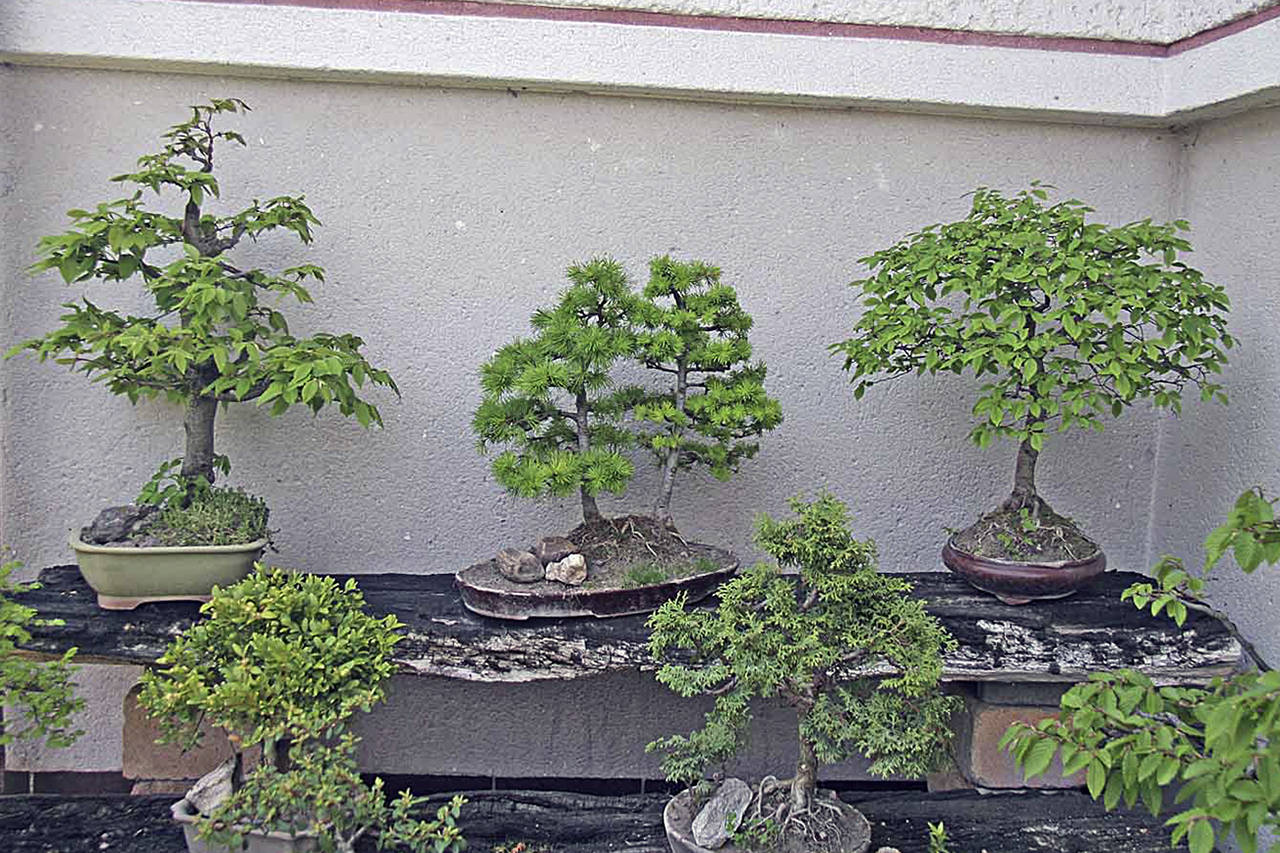By Katie Lutz
WSU Master Gardener
Bonsai is another unique contribution made by the Japanese for our collective gardening knowledge.
There is something truly magical about these dwarf plants that can live hundreds of years. The oldest living bonsai currently resides in Italy, believed to have exceeded 1,000 years in age.
Bonsai has dual origins. It began as “punsai” in ancient China over 2,000 years ago. At this time one of the prevailing religious theories was that by reproducing something in miniature, one could gain magical powers unique to the object. (What purpose that power would be used for was not clear from my research.) The smaller the reproduction, the more potent the power would be.
This idea extended to many different types of naturally found objects and environments. What became the first punsai were uniquely dwarfed tree specimens found in the wild that were transplanted into shallow containers where a small landscape would be created. These landscapes varied significantly across the many regions of China.
It wasn’t until around 1000 AD that punsai were introduced to Japan by travelers returning home. Heavily influenced by Zen Buddhism with less variation in their natural landscape, the Japanese began to simplify the punsai to a single tree in a shallow container, stripping it of much of the magical context that it had in China and focusing more on the technique.
That’s not to say that it was without any religious symbolism. These Japanese punsai were viewed as representing the universe. At the beginning of the 1800s, the gardening practice officially gained the title Bonsai — the Japanese pronunciation of punsai.
Several traits are important to consider in the practice of Bonsai. You can start with a cutting or a seedling, but traditionally they come from an otherwise perfectly normal perennial shrub or tree. Some of the most common plants used for Bonsai include certain species of maple, pine, spruce and wisteria.
The selected plant is not a genetic dwarf. Through the techniques related to Bonsai, the plant is miniaturized. It is also important that the selected plant be able to display enough traits to suggest what it would look like at its normal mature size.
As your Bonsai grows, it will need to change pots as it transitions from the landscape or nursery to its long-term home. Training pots exist to prepare the plant to grow a root net that will support it long term in one of the shallower Bonsai pots. Do not put a plant directly into a Bonsai pot! That’s a way to directly kill it.
As it grows, you have many options to choose from in terms of growth style. Two of the most common for beginners are the formal and informal upright styles. The formal upright style has the plant growing straight upward with a symmetrical appearance. The informal upright style grows straight with an asymmetrical appearance: The trunk has a zigzag shape, and branches grow at a diagonal. To achieve any of the growth styles requires both root and branch pruning, along with judicial use of wiring and possibly pinching.
Bonsai are grown both indoors and outdoors, so depending on your choice of plant and location, the water and fertilizer needs will be very different. Soil is typically going to be coarse and porous and will require frequent checking, regardless of the type of plant, to make sure it is receiving the proper amount of water.
Out of all the gardening techniques I’ve encountered so far, Bonsai is one of the most technically rigorous and rewarding in the long term. It runs counter to many of the things that we focus on when gardening — crop succession, dates to maturity, and techniques to extend a harvest.
Though not for everyone, there is something to be said about the magic of these handcrafted plants that can last lifetimes.
Katie Lutz, from Hoquiam, joined the WSU Master Gardener program in 2016.


